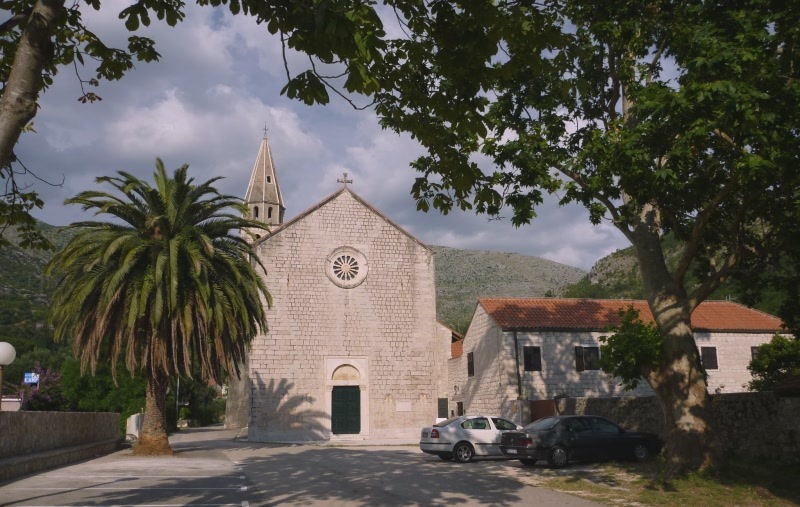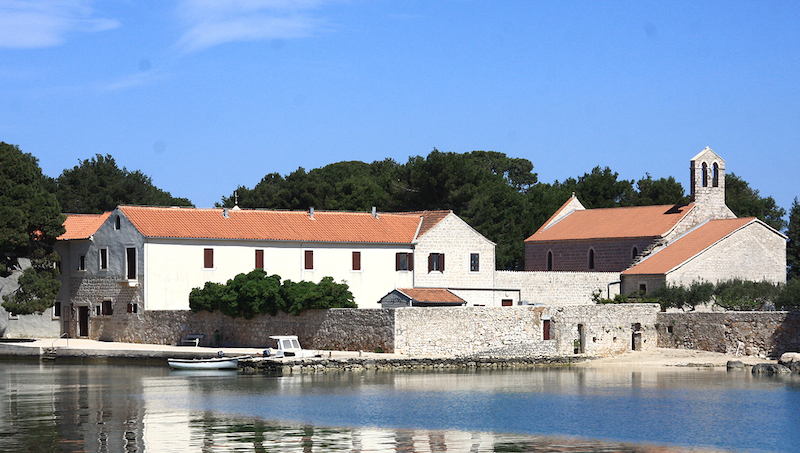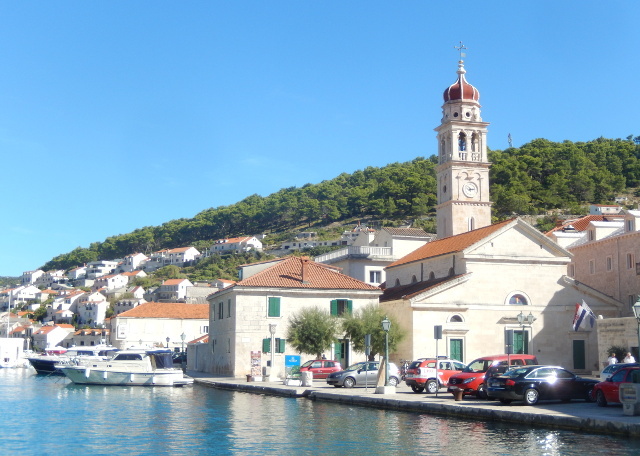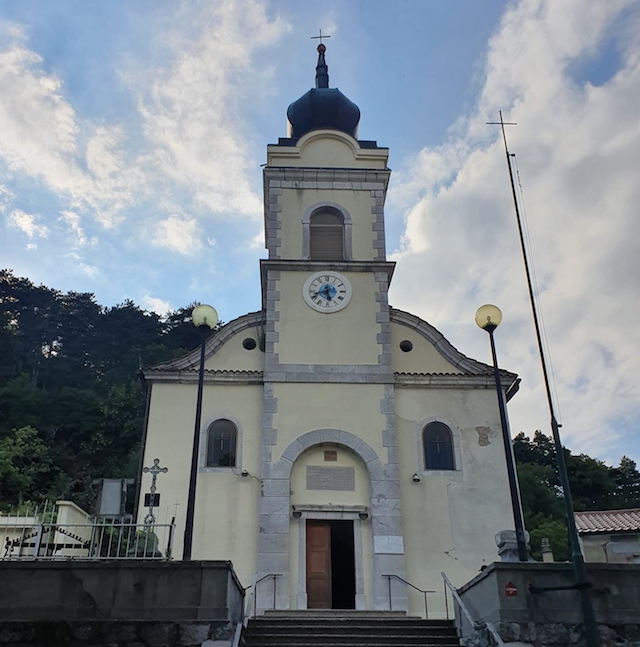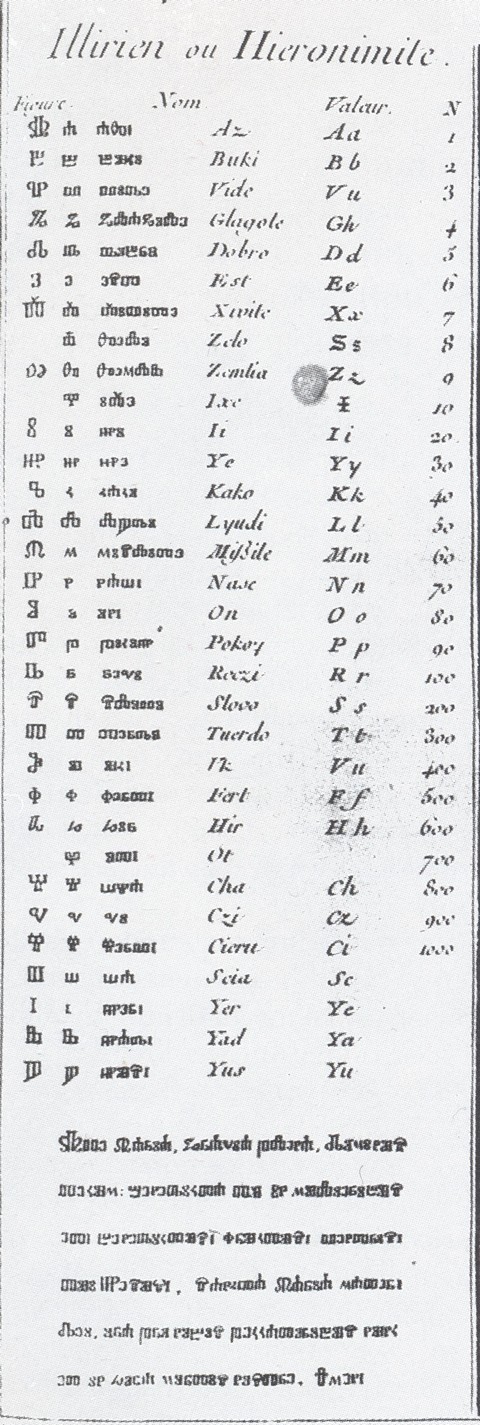 | St. Jerome, one of the most important spiritual writers of the Western Civilization, who translated the Bible into the Latin language, died in 420 AD. His importance for Croatia is analogous to that of St. Martin for France (who died in 397 AD). St. Jerome entered into the history of Croatian literature already in the Middle Ages. In Croatian lands there are as many as 63 sacral objects bearing the name of this saint. The present Papal Croatian Department of St. Jerome in Rome has its roots from the time of Pope Sixto V (end of 16th ct.), who was of Croatian origin. Protector of theologians, librarians, teachers and students, St. Jerome is celebrated on 30th of September. |
| St. Jerome, one of the most important spiritual writers of the Western Civilization, who translated the Bible into Latin language, died in 420 AD. His importance for Croatia is analogous to that of St. Martin for France (who died in 397 AD). St. Jerome entered into the history of Croatian literature already in the Middle Ages. In Croatia, there are as many as 64 churches and chapels bearing the name of this saint. The present Papal Croatian Department of St. Jerome in Rome has its roots from the time of Pope Sixto V (16th ct.), who was of Croatian origin. Protector of theologians, librarians, teachers and students, St. Jerome is celebrated on 30th of September. |
Pope Sixto VPope Sixto V (1521-1590, the pope from 1585-1590), born in the Italian province of Marche, had Croatian roots. Indeed, historical documents say that his father was a Croat from the Boka kotorska bay (now in Montenegro), and his mother was Italian. Due to his enormous contribution to the modern urban shaping of Rome, some specialists (e.g. Giedion) think of him as the earliest urbanist in the modern sense. He initiated building of the Vatican Library. The famous Michelangelo's cupola of the basilica of St. Peter had been erected during his pontificate. |

Pietro Gagliardi: Pope Sixto V with a drawing of the church of St. Jerome, 1850.
The portrait is kept in Croatian church of St. Jerome in Rome.

Croatian (Illyric) Capitol in Rome, since 1901 renamed to the Papal Croatian Department of St. Jerome.
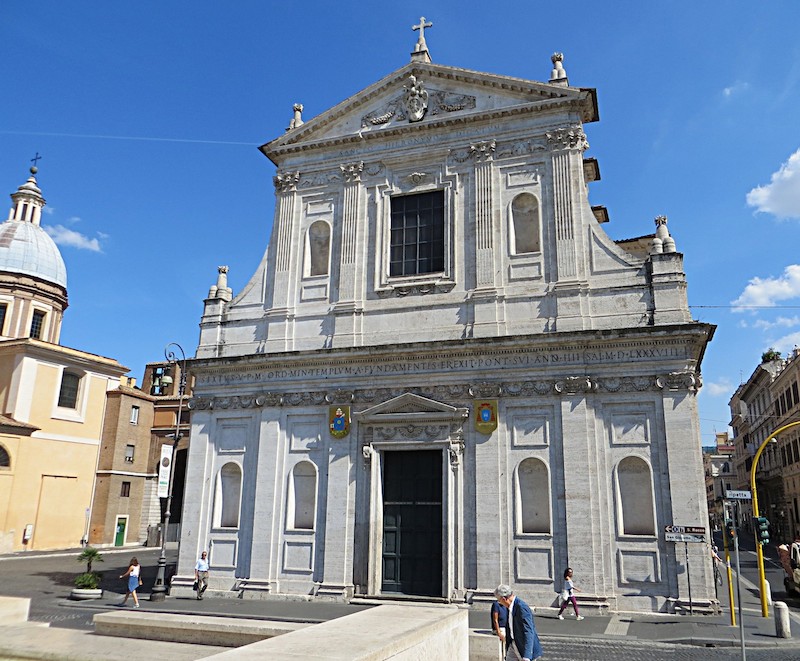
Chiesa Rettoria San Giorlamo dei Croati in Rome (source Wikipedia). Here, San Giorlamo = St. Jerome.
| He also introduced 15 congregations and reduced the total number of cardinals to 70. It is interesting that the first non-Italian cardinal appointed by Sixto V was a Croat: Juraj Draskovic (Georgius Draskovitius Croata), the Zagreb Bishop and Croatian ban (Viceroy). |
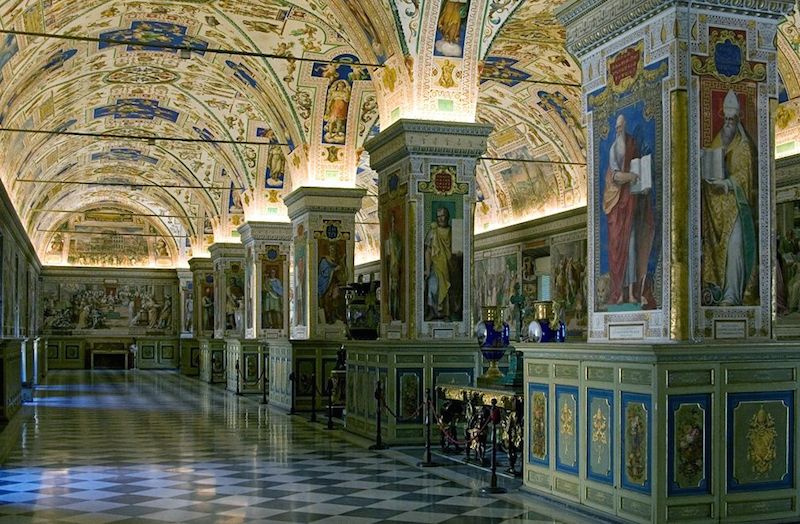
Sala Sistina (the Sixtine Hall) in the Vatican Library,
with the figure of St. Jerome on the right (the first column, with blue background), containing the table
of the Croatian Glagolitic Script above his head (on red background).
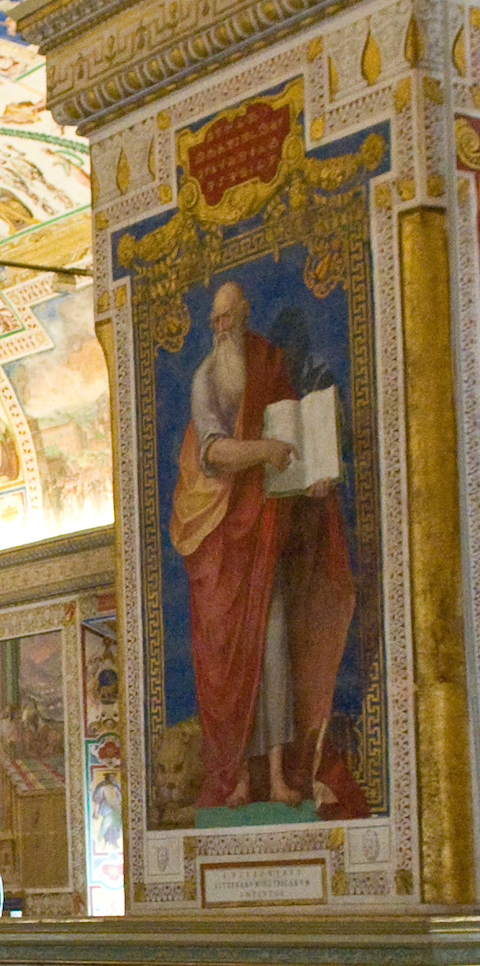
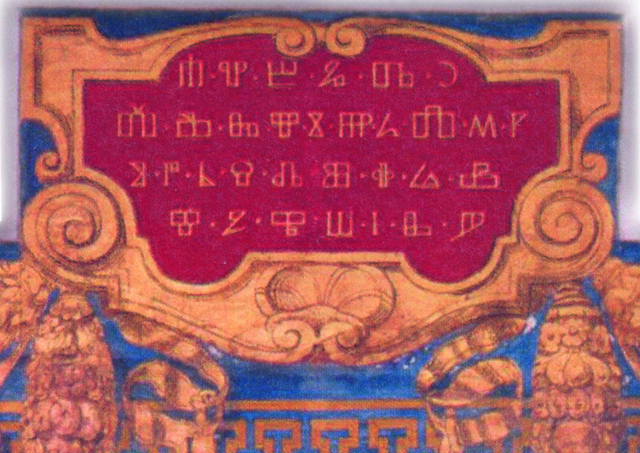

| By a special bull, Pope Sixto V founded the Croatian (Illyric) Capitol in Rome, the unique national Capitol in Rome in the entire history of the Church (in 1901 renamed to the ``Papal Croatian Department of St. Jerome' by Pope Leo XIII). He rebuilt and reconstructed many churches in Rome, but there was only one newly built church in Rome during his papacy: the Synodal Croatian (Illyric) Church of St. Jerome. It served for the needs of the Croatian people. By a special bull he ordered that it should have 11 priests of the Croatian origin (nationis Illyricae). He also confirmed the Croatian (Illyricae) Guesthouse in Rome (built in 1445). The presence of many Croatian pilgrims in Rome had been confirmed by Dante in his Divine Comedy (Eden, 31, 103), see here: It is interesting that Dante Alighieri (13/14th centuries) mentions the Croatian pilgrims to Italy in his Divine Comedy (Paradiso XXXI, 103-108):
It seems that Dante traveled through Croatia with Croatian Bishop Augustin Kazotic. All this reveals undoubtably a special affection that Pope Sixto V had for the Croats. Ive Livljanic: Hrvatska i Sveta Stolica, s osvrtom na glagoljase |
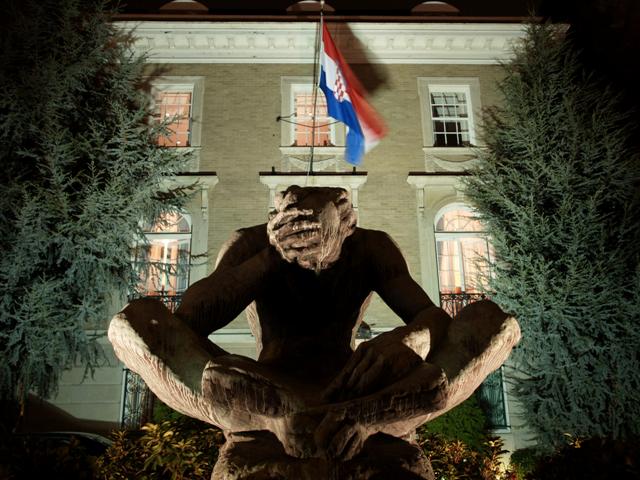
Ivan Mestrovic's St. Jerome in front of the Embassy of the Republic of Croatia, Washington DC, USA
A gift from Croatian Fraciscan Glagolitic Tertiaries in the USA
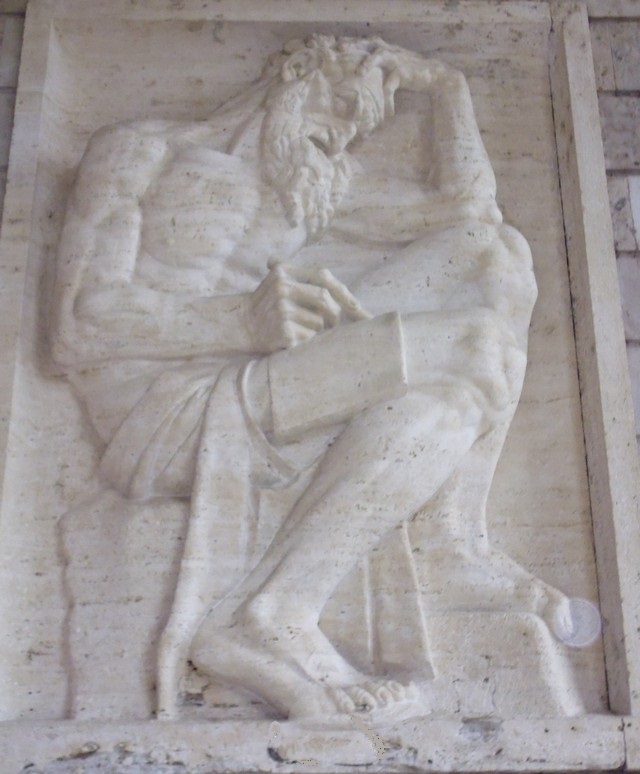
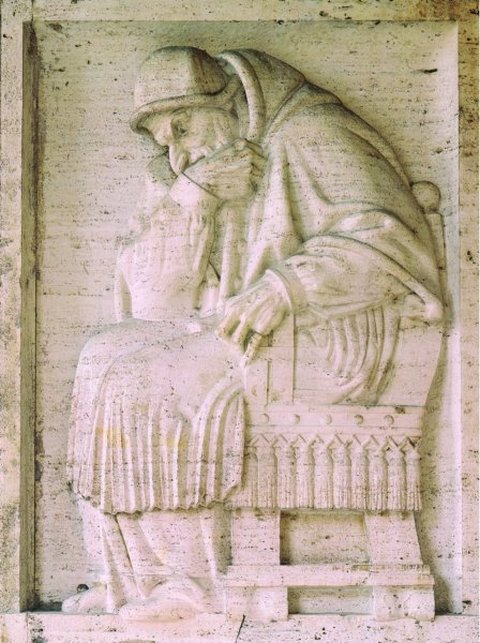
The reliefs were made in 1942 and are located at the entrance porch of the building of
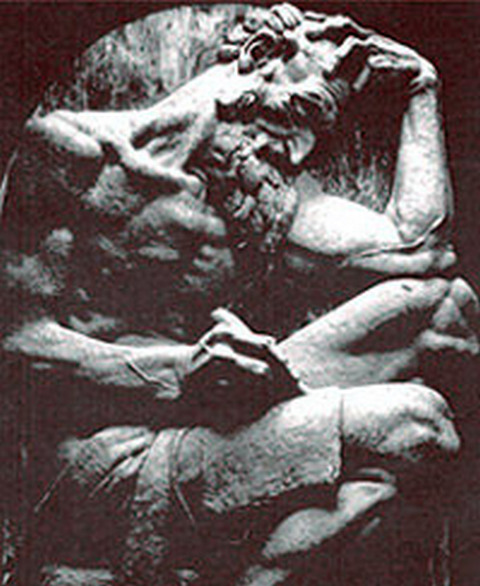
Sv. Jerolim island, near Istrian peninsula (archipelago of Brijuni islands), not far from the city of Pula
The church of Sv. Jere (St. Jerome) on Marjan hill in the city of Split

Parish of Sv. Jeronim in Kaštel Gomilica near the city of Split
Klapa Sv. Jeronim, Kaštel Gomilica near the city of Split
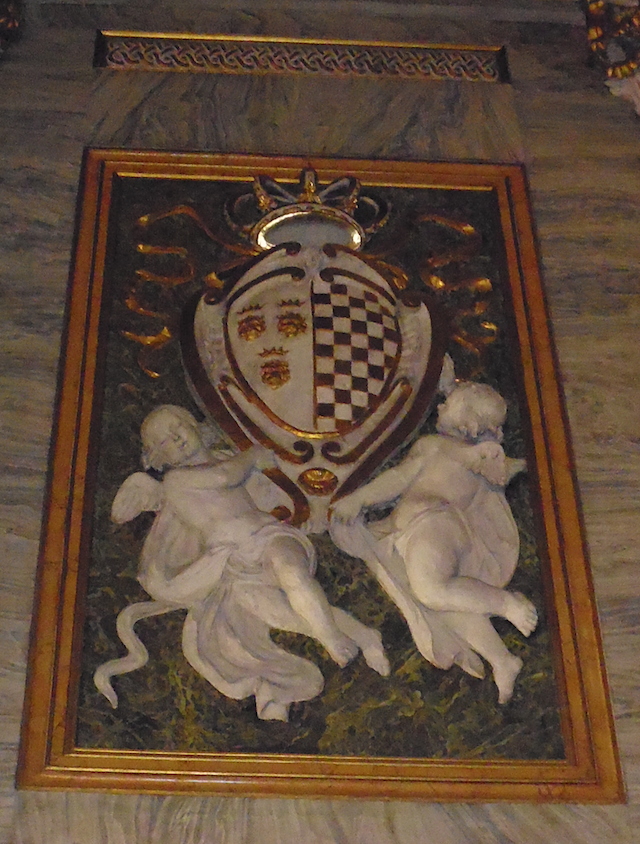
Croatian church of St. Jerome in Rome, with Croatian Coat of Arms on the wall.
Photo by the courtesy of Mirna Lipovac, Zagreb.
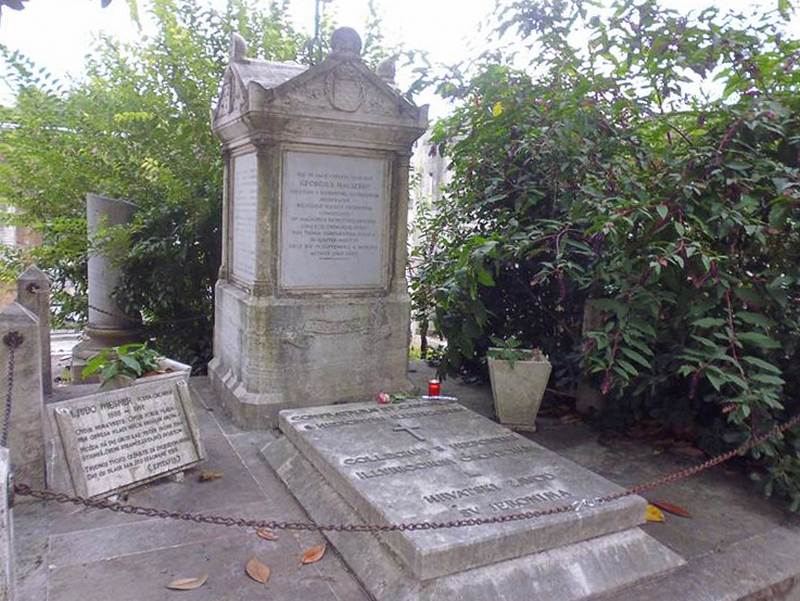
Grave of the members of the Croatian Collegium of St. Jerome (Hrvatski kolegij sv. Jeronima) in Rome,
in the graveyard of Campo Verano, with Croatian Coat of Arms with the crown. It dates from 1859.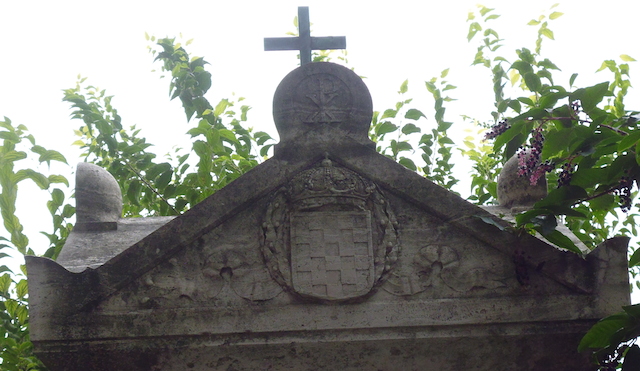
On the right side of the monument is the name of Dragutin Antun Parčić,
distinguished Croatian lexicographer, linguist and Glagolitic priest.
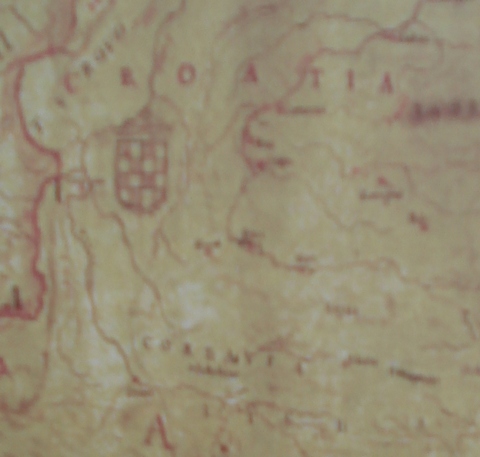
A part of the map of Illyrian provinces (roughly Croatia + Bosnia and Herzegovina)
(kept in Rome, in Papinski hrvatski zavod sv. Jeronima - Papal Croatian collegium of St. Jerome).
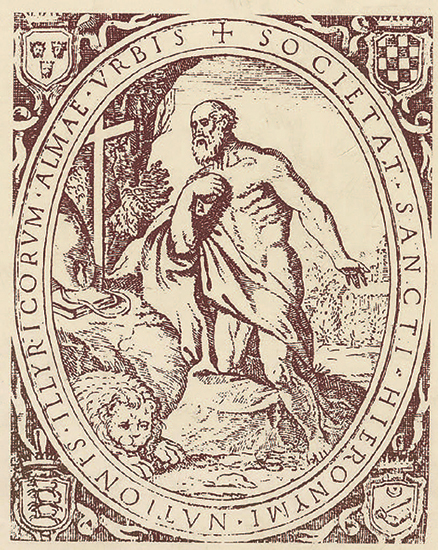
with coats of arms of Dalmatia and Croatia on the top, and Slavonia and Bosnia at the bottom

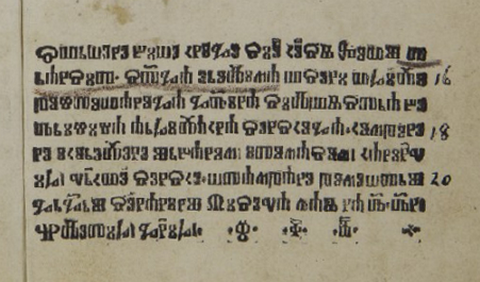
| Marko Marulić (1450-1524), distinguished Croatian Renaissance writer and humanist According to C. Verdiani, Marko Marulić is the author of the Florence Codex, which contains a biography of St Jerome written in the Croatian language. There he wrote and a brilliant crown of the Croatian language. In Croatian: Jerolim je nass Dalmatin, on je dika, posstenje i slava i svitla kruna hrvatskoga jezika. Marulić's verses appeared printed in the Glagolitic Script alreday during his lifetime, in Transit of St Jerome (Transit sv. Jerolima), published in the town of Senj in 1508 under the title of Anjelske kriposti, in 144 doubly-rhymed dodecasylabic (ie 12 syllabic) lines. These verses, transcribed into the Glagolitic from the original Croatian text in Latin script, can be found by the end of the book. Many thanks to academician Anica Nazor for this information (2007). Here is a part of describing wisdom of St Jerome, see [Bratulic, Il poeta Marco Marulić e la tradizione glagolitica in Croazia, p 232]:
Older Croatian Glagolitic Transits of St Jerome have been studied by [Štefanić]. A famous Croatian Renassance writer Petar Zoranic (1508-1569) born in the city of Zadar, and known for his patriotic novel Planine (The Mountains), has his roots in Lika. His ancestors were the noble family Tetačić from Lika, and when the Ottomans attacked Nin at the end of the 15th century, the family moved to the fortified town of Zadar. Zoranic returned to Nin when the Ottoman attacks lessened. He was born in Zadar to his parents, father Ivan and mother Elizabeta Medulla. In Planine he explicitely mentions the Glagolitic Script: "...i da bi me tumačenje blaženoga Hieronima ne uvižbalo, s prirokom bih pisal, boju se" ("da nisam uvježban u pismu sv. Jeronima, bojim se da bih teško pisao", i.e., "if I were not trained in the script of blessed St. Jerome, I am afraid that I would not have been able to write"). |


Renowned French polyhistorian and encyclopaedist Guillaume Postel included a table of Croatian Glagolitic Script (which he calls Alphabetum Hieronymianum seu Dalmaticum, aut Illiricum) in his book Linguarum duodecim characteribus differentium alphabetum ([pdf] at Bibl. Nationale, Paris) published in 1538. According to Eduard Hercigonja, this represents the first mention of Croatian Glagolitic in West-European printed literature. Here is Postel's Glagolitic table, [pdf], or see below: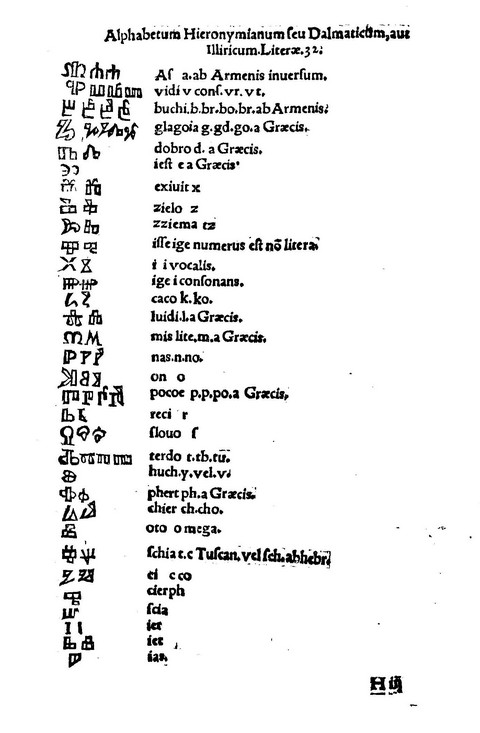 As we can see on the top, the Croatian Glagolitic Script is called Alphabetum Hyeronimianum seu Dalmaticum, aut Illiricum. Note also a mistake in Postel's initial order of Croatian glagolitic letters: instead of AZ VIDI BUKI, there should be AZ BUKI VIDI. |
In 1545, in Rome, an Italian encyclopaedist Giovanni Batista Palatino presented the Glagolitic Script in the second edition of his book Libro Nouvo (Libro nel qual s'insegna a scrivere ogni sorte lettera, antica et moderna...), among 29 scripts that he designed for printing. He claims the Glagolitic (which he calls Buchuizza - bukvica) to be created by St. Jerome, and "different from all other existing Scripts". 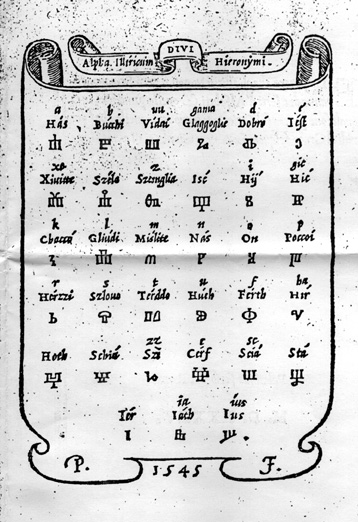 Here, the Croatian Glagolitic Script is called Alphabetum Illyricum Hieronymi. Gianbatista Palatino also mentions that there are numerous breviaries and missals written in the glagolitic, including the Glagolitic Bible (...et anco la Biblia). In the book a Croatian cyrillic is also exhibited, with the inscription on the tombstone of the Bosnian Queen Katarina (15th century). |
| In 1591 an Italian scholar Angelo Rocca (founder of Angelica Library at Rome) wrote a book where Glagolitic Script is included (A. Rocca: Biblioteca Apostolica Vaticana a Sixto V... translata, Roma, 1591: Alfabeto glagolitico). 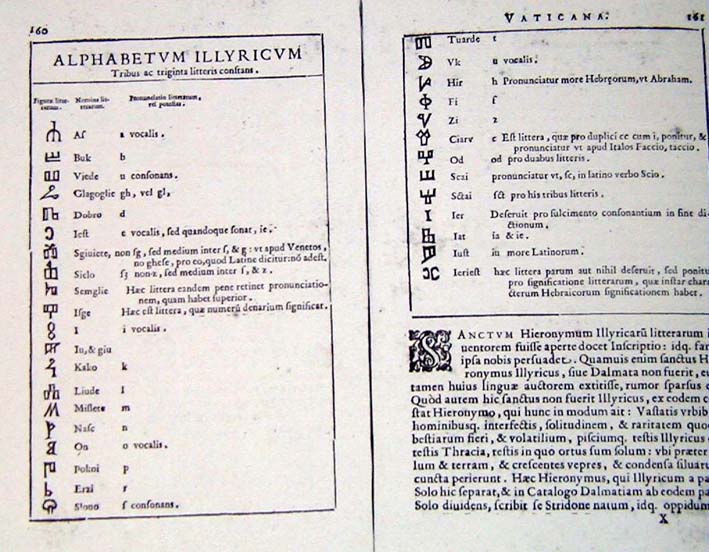 In the description on the right-hand page, it is mentioned that the Croatian Glagolitic Script was created by St. Jerome. On the second page (p. 161) there are several mistakes in the natural order of letters (between UK and JER: should be UK FRT HIR OT ŠĆA CI ČRV ŠA JER). |
| Claude Duret, French scholar, is the author of the book ThrĂŠsor de l'histoire des langues de cest Univers (1078 pp), published in 1619, which contains two tables of Croatian glagolitic, and we show one of them (on p. 740): 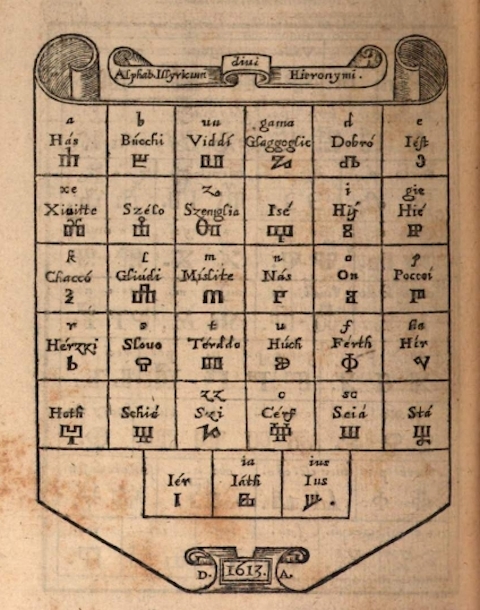 The second table is here (on p. 739): [JPG]. In his book he cited Giovanni Batista Palatino's description of the Glagolitic, and trenslated it into French (see [JPG]): "... & ont en icelui leurs Messels, Breuiares, & Offices de la nostre Dame, & encor la Bible". On p. 744 one can find Lord's Prayer in Croatian (see [JPG]). See [Kempgen]. |
| The French Encyclopedie by Diderot and D'Alambert from 1751 has a table and a short description of the Glagolitic script, called Ilyrien ou Hieronimite (in section Alphabets anciens). This enabled wide European cultural circles to be better acquainted with this exotic script (...Les caracteres illyriens sont singuliers et on y remarque tres peu de rapport avec les alphabets que nous connaissons...). For more information see [Hercigonja: Na temeljima hrvatske knjizevne kulture, pp 49-56]. The photo of the Croatian glagolitic table in the French Encyclopedia is here: |
| Pierre Simon Fournier, Manuel typographique, utile aux gens de lettres, & a ceux qui exercent les differentes parties de l'Art de l'Imprimerie. Par Fournier, le jeune. Tome II. A Paris, Chez l'Auteur, rue des Postes. J. Barbou, rue des Mathurins. MDCCLXVI. [1766]. 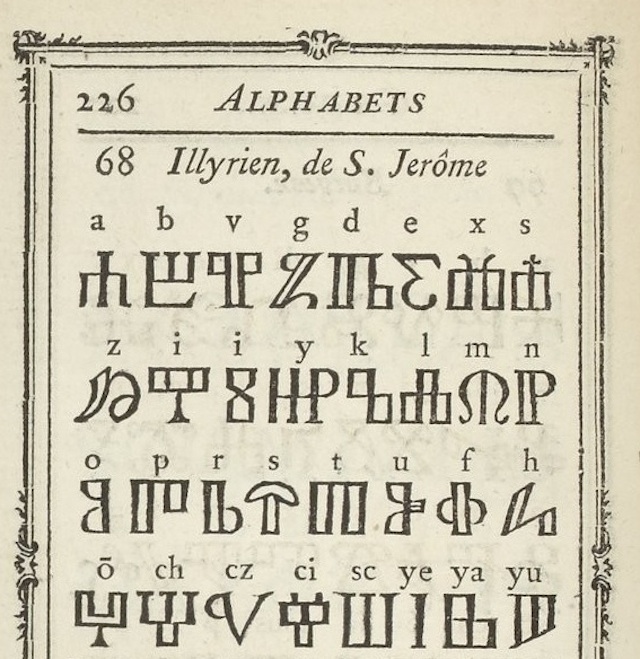 Paris, 1766: Croatian Glagolitic Script is called Illyric Alphabet, or the Alphabet of St. Jerome. Of course, in numerous other sources, the Alphabet is called simpy Croatian Script (Alphabetum Croaticum). |
| Croatian Glagolitic documents and books are scattered throughout the world, in as many as 28 countries. Some important items are kept in Russia, in Moscow and Sankt Peterburg. The Library of the Russian Academy of Sciences in Sankt Peterburg (I.I. Sreznjevski collection) contains the following:
Lit. S.O. Vjalova, Glagoličeskie pamjatniki v hraniliščah Rossii, Slovo, sv. 54-55 (2004-5), Zagreb 2006, 171-194 |
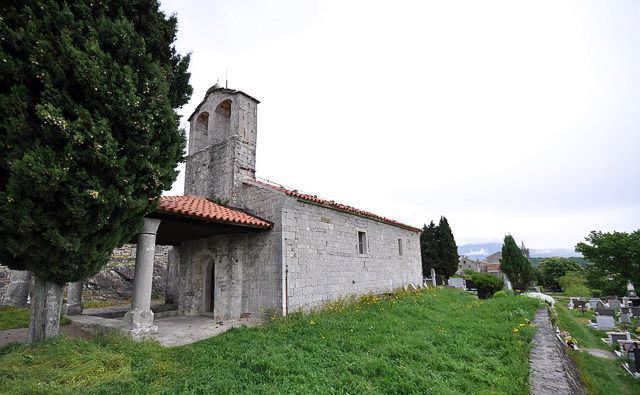
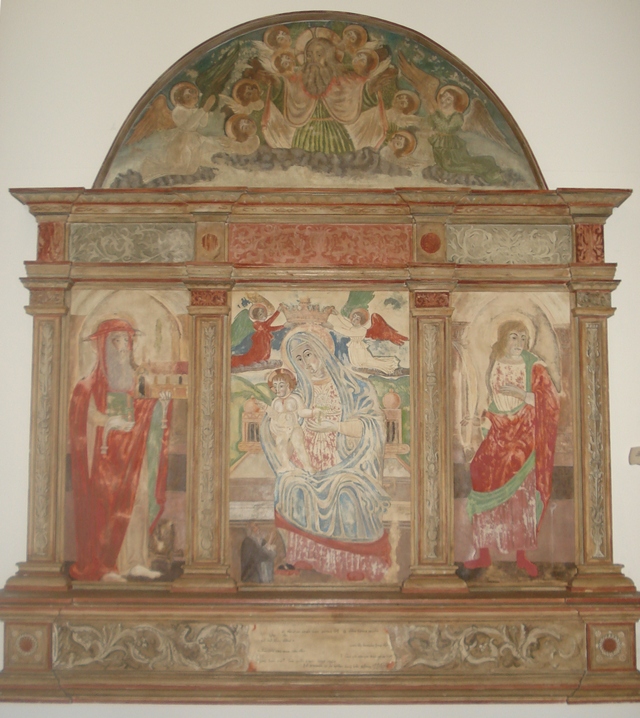
Humski triptih s glagoljčkim zapisom (Exhibition of Glagolitic Script, Rijeka)
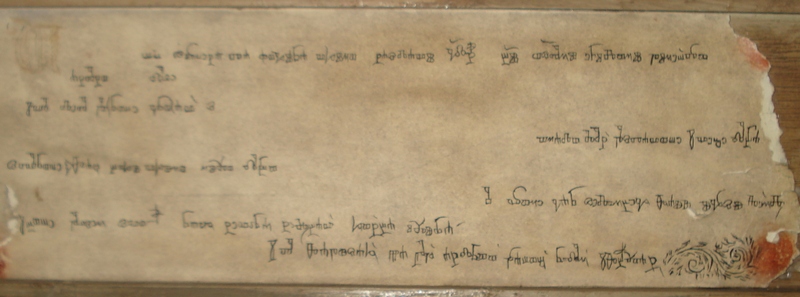
V Hrstovo ime, amen. Let rojstva togoje 1529., miseca sktebra dan 20., bi svršena ta figura v Humi na slavu Gospodinu Bogu i svetomu Jerolimu po meštri Antoni s Padove (danas Kašćerga). I v to vrime biše v Humi plovan, gospodin Ivan Pečanić rodom iz ...ate. I v to let pokriše crikav sv. Jerolima i učiniše(?) figuru na antar svetoga Antona... i mali zvon postaviše i veće dobra stvoriše zač bihu v Humi muži dobri Juraj Gržinić i njega podžup Grgur Bakšić i ostali dobri muži. I v to vrime car Selimbeg zauja ugrsku zemlju i biše po vsemu svitu rat, nevera, neljubav, himba, užura. I to zapisah ja, pop Andrij Prašić rodom iz Bužan.
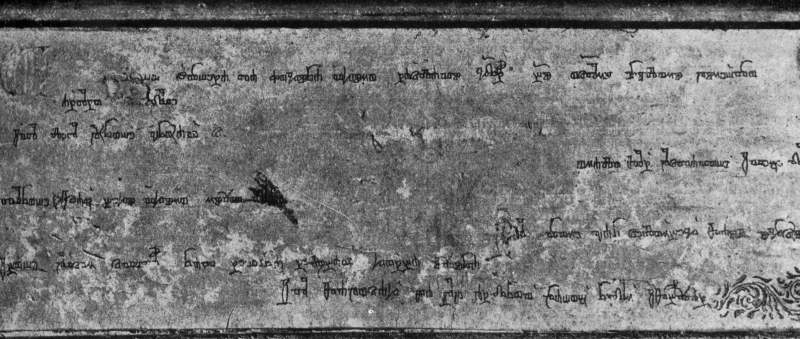
A detail from the Hum triptich, with a text written in nice glagolitic quickscript from 1529. The Hum Triptich was created in 1529 and originally placed in the church of Sv. Jeronim in Hum, now in Pazin. The triptich was raised to the glory of God and St. Jerome. The name of Erolim is the second last in the first line.
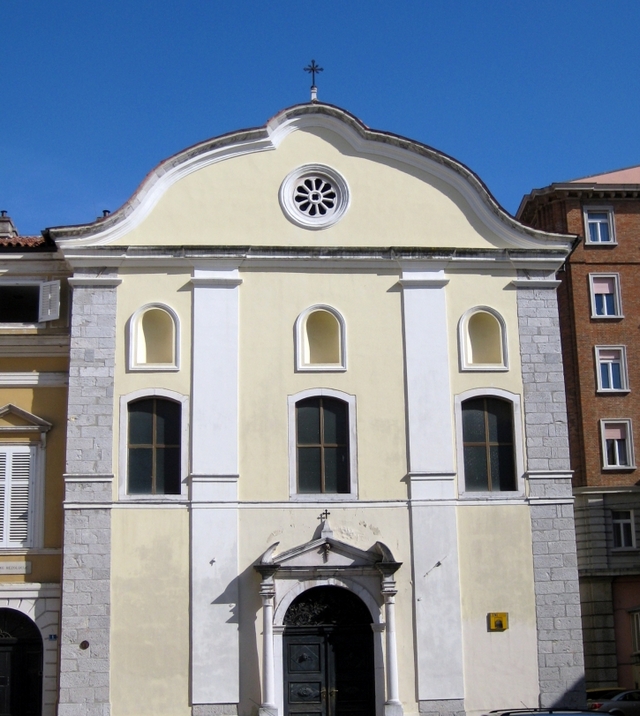

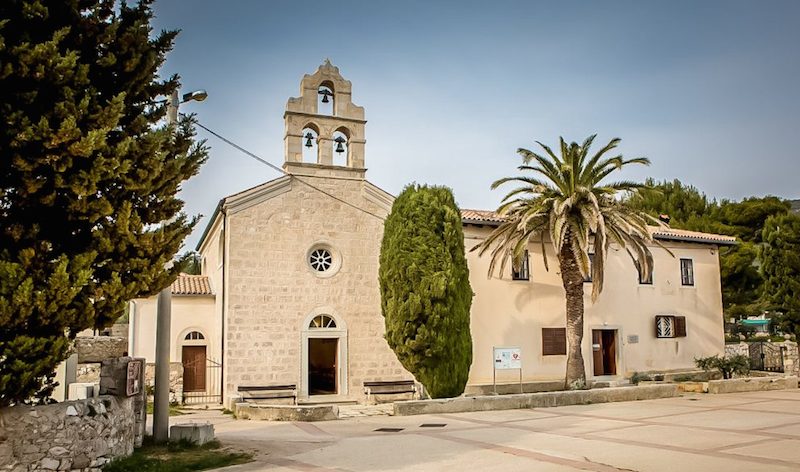
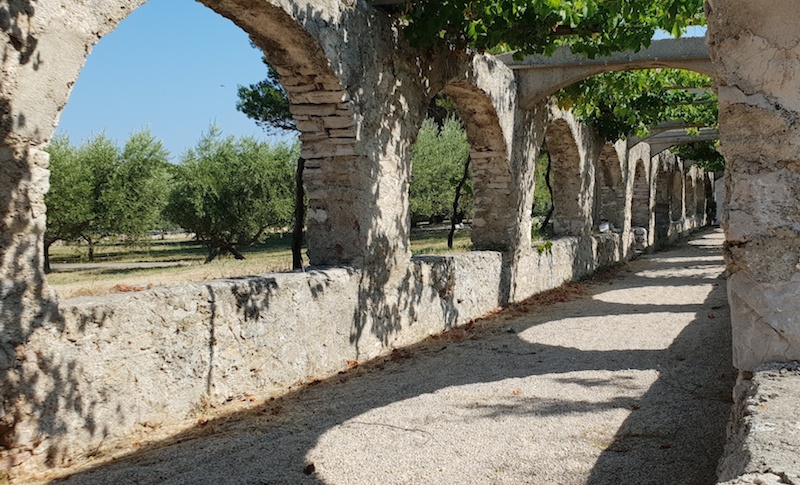
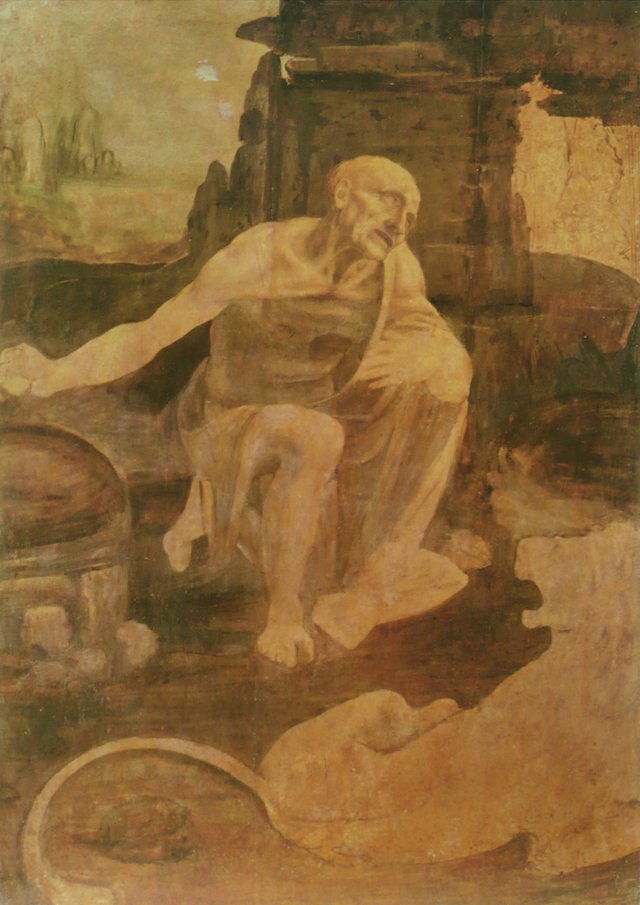

| Marco Carpiceci and Fabio Colonnese Leonard, St. Jerome, and the Illyrians' Church in Rome In Leonardo da Vinci - Nature and Architecture (Leonardo Studies, Volume 2) Abstract. This study is based on an intuition of Alberto Carpiceci, who more than forty years ago suggested the existence of a link between the small church sketched in Leonardo da Vinci's St. Jerome in the Wilderness and the built church of S. Girolamo degli Schiavoni in Rome. Starting from this intuition, the authors have tried to verify the concrete possibility that during his Roman stay, Leonardo da Vinci worked on a project for the new church. In the absence of documents attesting to any link between Leonardo and the Illyrian community in Rome, the primary documentation is reduced to three elements. First, the painting of St. Jerome in Vaticano, with the little Renaissance church sketched on it. Critics agree on attributing it to Leonardo, but disagree both on the name of the commitment and on its temporal collocation, also in virtue of the anatomical qualities of the subject portrayed. Second, an autograph sketch of Leonardo conserved at the Galeria dell'Accademia in Venice. It represents a longitudinal-plan church, somewhat rare in his architectural designs but sharing many elements with that depicted on the St. Jerome. Third, the church of S. Girolamo degli Schiavoni in Rome, especially its facade, which is considered by scholars to be anachronistic, and the context of the Porto di Ripetta in which it was built at the end of the sixteenth century, from a historical, geographical, artistic and even archaeological point of view. Source https://doi.org/10.1163/9789004398443_010 Online Publication Date: 11 Jun 2019 |
